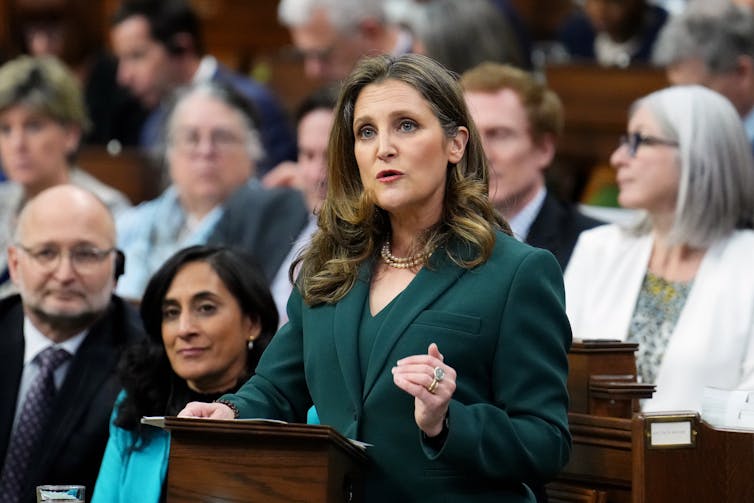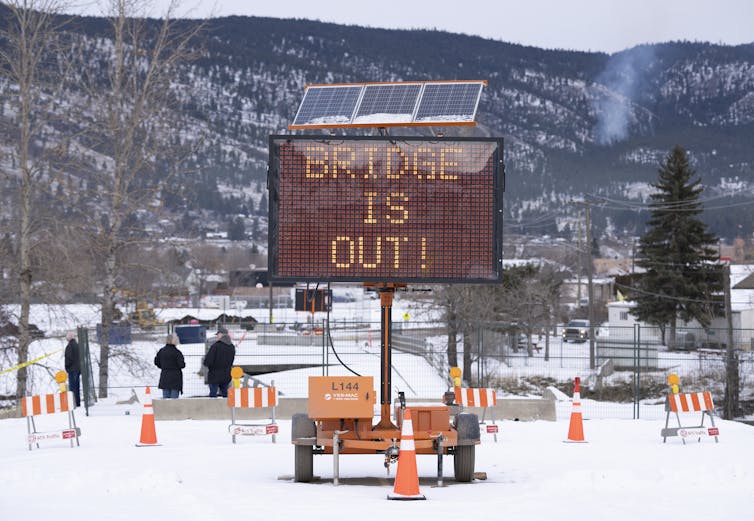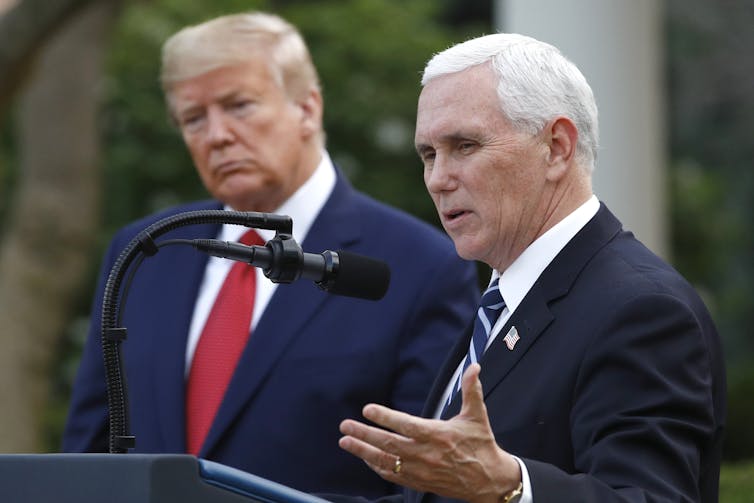The federal government’s 2023 budget unveiled investments in infrastructure, with a narrative highlighting resilient and sustainable communities, and pointing to Ottawa’s progress and investments to date.
The budget is focused on building communities through infrastructure, housing, transit and connectivity. Much of this emphasizes investments made since 2015, including $33.5 billion to the Investing in Canada Infrastructure Program, and $35 billion to the Canada Infrastructure Bank.
Funding critical infrastructure
The budget’s investments include funding advanced research in infrastructure innovation, and continuing to invest in Canada’s Infrastructure Bank and Infrastructure Program.
The bank will play a leading role in electrification as part of the government’s push for clean power. This will likely position the bank as the government’s primary financing tool for major electrification projects.

THE CANADIAN PRESS/Sean Kilpatrick
Budget 2023 also commits to engaging with provinces and territories to revise procurement policies to ensure they benefit Canadian workers and build resilient supply chains. There are also investments in port, air and other critical transportation infrastructure.
We know that Canada’s infrastructure is at risk. Federal infrastructure investments can help to take financial pressure off municipalities that are faced with massive funding shortfalls in addressing their infrastructure concerns. With the population expected to grow, infrastructure will continue to be stressed and will struggle to keep up without proper funding.
Budget 2023 provides no new major funds for what is considered essential community infrastructure: roads, water, wastewater and other infrastructure assets. Unlike electrification and connectivity — many aspects of Canada’s infrastructure gap remain relegated to low-priority status.
More investment is needed to address critical infrastructure gaps, but these are investments that Canadians may not be ready to make. Previous budgets have focused on short-term infrastructure investments as an economic stimulus, which doesn’t support the long-term view infrastructure requires.
Canada’s infrastructure gap
A 2013 report on Canada’s infrastructure gap highlighted the chronic issues in infrastructure investments, including the notion that infrastructure remains a political hot potato.
Between the late 1950s and mid 2000s, public investment in infrastructure decreased from around three per cent of GDP to 1.5 per cent, though it began to rise again in 2010.
During this same period, there was a significant shift in terms of who carries the burden of investing in infrastructure from the federal government, with a large revenue base, to municipalities who have the smallest revenue base.
Canada’s infrastructure deficit is at minimum estimated at $150 billion.
Local governments bear much of the additional infrastructure costs related to extreme events, climate change mitigation and adaptation.
In 2013, floods caused around $3 billion in damage in southern Alberta and Toronto. The cost of rebuilding in British Columbia after 2021 flooding has reached nearly $9 billion. The annual cost of natural disasters in Canada could be up to $139 billion by 2050.

THE CANADIAN PRESS/Jonathan Hayward
Internationally, governments are struggling with the same issues. From U.S. President Joe Biden’s $1 trillion infrastructure bill to China’s infrastructure investments, infrastructure demand remains a constant across international communities from large to small.
But the question remains, where and how should we invest? And more importantly, what do you do when too few people seem to pay attention? North Americans have an imbalanced relationship with infrastructure, and our understanding of priority and need. We care less about infrastructure investments when we can’t see the direct benefits.
What we see in the 2023 budget is a careful dance. The government needs to show it’s making investments in infrastructure without further stretching public finances or making the tough choices that our dilapidated infrastructure requires.
No political party is protected from the curse of the infrastructure deficit — and there are no winners in the game of infrastructure funding. What it does require, is that we all collectively take responsibility. This means dealing with public spending deficits, even if that means paying more taxes. And strengthening our relationship with infrastructure and our collective understanding of the role that it plays in our daily lives.
Governments will need to take on additional costs, and individuals will need to learn to accept that improving our communities costs money. We all need to learn that the connection between infrastructure and our well-being is closer than we think.



